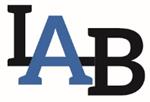Highlights:
- Discovery of two new mineralized showings at Hopedale, Labrador;
- First showing extends potential strike length by approximately 500 metres along strike of the Thurber Dog gold occurrence;
- Second showing was discovered in the Misery North area and followed for approximately 50 metres along strike.
VANCOUVER, British Columbia, July 26, 2019 (GLOBE NEWSWIRE) -- Labrador Gold Corp. (TSX-V: LAB) (“Labrador Gold” or the “Company”) is pleased to announce the discovery of two new mineralized showings shortly after the start of field work at its Hopedale project in Labrador.
The company controls a 57-kilometre strike length of stratigraphy prospective for gold in the Florence Lake Greenstone Belt (FLGB). The current program aims to generate drill targets within these areas using detailed geological mapping, rock sampling and prospecting and ground magnetics/VLF-EM (very low frequency electromagnetics).
Shortly after the start up of field work two new mineralized showings were discovered and sampled. The first showing is located approximately 500 metres north and along strike of the Thurber Dog gold occurrence where previous Labrador Gold rock sampling returned values up to 7.87 g/t Au. Mineralization is comprised of disseminated to semi-massive pyrite and arsenopyrite hosted by mafic metavolcanic rocks with pervasive iron oxide alteration.
The second occurrence “Sunshine” was found in the Misery North area of the belt and is a two-metre-wide gossanous zone that was followed and sampled for approximately 50 metres along strike. It is hosted by altered felsic metavolcanic rocks close to the contact with mafic metavolcanics rocks where the rock is pervasively silicified. Mineralization is dominated by disseminated pyrite, locally up to 60% with minor pyrrhotite and chalcopyrite. Limited previous rock sampling by Labrador Gold at Misery North has returned gold values up to 0.56 g/t Au.
“The early results of our 2019 exploration program at Hopedale are very promising and indicate that our systematic approach to exploration of the belt is getting us into the most favourable areas for gold mineralization.” said Roger Moss, President and Chief Executive Officer of Labrador Gold. “We anticipate further discoveries as we continue our detailed, systematic follow up of the remaining anomalous areas that will allow us to select the best targets for drilling.”
The 2019 exploration program at Hopedale is designed to follow up on successful results of 2017 and 2018 work that outlined eight high potential areas of gold anomalies in both soil and rock in the belt (see table below and maps at www.labradorgold.com/portfolio/hopedale/ ). These areas typically occur along geological contacts and are commonly associated with magnetic anomalies. To date the company has collected 12,510 soil samples, 414 lake sediment samples and 633 rock samples along the length of the greenstone belt.
| Target | Soil Au (ppb) values* | Rock Au (ppb) Values* | Anomalous Trend | Comments |
| Thurber Boundary | Bd up to 1,568 | Bd up to 750 | 850 metres | Close to mafic-sedimentary contact |
| Thurber North | Bd up to 946 | Bd up to 3,800 | 1,400 metres | Close to ultramafic- felsic/mafic contact |
| Thurber South | Bd up to 2,860 | Bd up to 7,866 | 450 metres | Close to ultramafic/felsic contact |
| Jasmine North | Bd up to 135 | Bd up to 4,549 | 1,100 metres | Close to ultramafic/mafic contact |
| Jasmine South | Bd up to 359 | No significant values | 1,500 metres | Along both limbs of folded ultramafic close to contact with sedimentary and felsic volcanic rocks |
| Misery North | Bd up to 201 | Bd up to 560 | 400 metres | Close to ultramafic-felsic/mafic contact along magnetic high |
| Misery | Bd up to 2,224 | Bd up to 11,400 | 2,000 | Close to ultramafic- felsic contact along interpreted extension of the Ugjoktok shear zone |
| Schist Lakes | Bd up to 93 | Bd up to 381 | N/A | Associated with a weak magnetic high extending over 1,000 metres parallel to stratigraphy |
*See news releases dated February 5, 2019 and March 13, 2019 for further details of the results.
Bd = below detection: 5ppb for rock and 0.5ppb for soil.
Roger Moss, PhD., P.Geo., is the qualified person responsible for all technical information in this release.
About Labrador Gold:
Labrador Gold is a Canadian based mineral exploration company focused on the acquisition and exploration of prospective gold projects in the Americas. In 2017 Labrador Gold signed a Letter of Intent under which the Company has the option to acquire 100% of the 896 square kilometre (km2) Ashuanipi property in northwest Labrador and the Hopedale (458 km2) property in eastern Labrador.
The Hopedale property covers much of the Hunt River and Florence Lake greenstone belts that stretch over 80 km. The belts are typical of greenstone belts around the world but have been underexplored by comparison. Initial work by Labrador Gold during 2017 show gold anomalies in soils and lake sediments over a 3 kilometre section of the northern portion of the Florence Lake greenstone belt in the vicinity of the known Thurber Dog gold showing where grab samples assayed up to 7.8g/t gold. In addition, anomalous gold in soil and lake sediment samples occur over approximately 40 kilometres along the southern section of the greenstone belt (see news release dated January 25th 2018 for more details). Labrador Gold now controls approximately 57km strike length of the Florence Lake Greenstone Belt.
The Ashuanipi gold project is located just 35 km from the historical iron ore mining community of Schefferville, which is linked by rail to the port of Sept Iles, Quebec in the south. The claim blocks cover large lake sediment gold anomalies that, with the exception of local prospecting, have not seen a systematic modern day exploration program. Results of the 2017 reconnaissance exploration program following up the lake sediment anomalies show gold anomalies in soils and lake sediments over a 15 kilometre long by 2 to 6 kilometre wide north-south trend and over a 14 kilometre long by 2 to 4 kilometre wide east-west trend. The anomalies appear to be broadly associated with magnetic highs and do not show any correlation with specific rock types on a regional scale (see news release dated January 18th 2018). This suggests a possible structural control on the localization of the gold anomalies. Historical work 30 km north on the Quebec side led to gold intersections of up to 2.23 grams per tonne (g/t) Au over 19.55 metres (not true width) (Source: IOS Services Geoscientifiques, 2012, Exploration and geological reconnaissance work in the Goodwood River Area, Sheffor Project, Summer Field Season 2011). Gold in both areas appears to be associated with similar rock types.
The Company has 56,264,022 common shares issued and outstanding and trades on the TSX Venture Exchange under the symbol LAB.
For more information please contact:
Roger Moss, President and CEO Tel: 416-704-8291
Or visit our website at: www.labradorgold.com
Neither TSX Venture Exchange nor its Regulation Services Provider (as that term is defined in policies of the TSX Venture Exchange) accepts responsibility for the adequacy or accuracy of this release.

